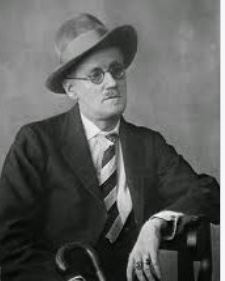
My Love Affair with James Joyce
Playwright Israel Horovitz was caught by several women who said “Me too.”, and so was Prairie Home Companion creator Garrison Keillor; filmmaker Woody Allen’s private life has been far from exemplary; abstractionist Pablo Picasso and novelist Philip Roth were notorious womanizers; the 17th century painter Caravaggio killed a man in a brawl; poet Robert Frost was a domestic abuser; and composer Richard Wagner was a vehement anti-Semite. Yet despite their reprehensible behavior, it seems I’m able to separate these artists from their art – perhaps because I love their work and want to enjoy it.
On the other hand, as far as I know, there was nothing reprehensible about author James Joyce. But to me his life – his Irish Catholic upbringing and his eventual disillusion with the faith; his unlikely romance; his self-exile from his homeland; his painful and lingering eye problems and innumerable surgeries; his battle against the censorship of his work – is all so intriguing while his literary gifts so monumental I can’t forget his own story while reading the stories he’s written.
And truthfully I’m a bit obsessive about James Joyce. I’ve read his all books; seen the stage and screen adaptions made from some; read biographies of Joyce and his wife and muse Nora Barnacle; am fascinated by his innovative stream-of-consciousness style, and his encyclopedic knowledge of languages, history and cultures; and am familiar with the facts surrounding the banning of his books and the sensational obscenity trial over the publication of his novel Ulysses in the 1920s. And twice my literary love affair with this Irish writer took me across an ocean.
Boulder, CO / New York, NY
It started innocently enough one summer in the late 1960s when I was living in Denver. I decided to take a course, discovered that the University of Colorado at Boulder had some great non-matric offerings, and signed up for one entitled Three Great Novels. I honestly don’t remember the other two novels I read in that class, but the third, James Joyce’s masterpiece Ulysses, was unforgettable. In fact it changed my life, at least my reading life, as I now measure every work of fiction I read against that great book – and disappointingly most pale in comparison.
That summer I’d drive the 30 miles from Denver to Boulder and, through Joyce’s astonishing genius, be transported from a sunny, Rocky Mountain classroom to the city of Dublin at the turn of the 20th century.
After that I couldn’t get enough, and back home in New York I took more Joyce courses over the years – at Hunter College on a study sabbatical; at NYU’s adult ed program; at the 92nd St Y; and at my neighborhood Barnes & Noble I joined a Ulysses reading group that met for 18 weeks, each week covering one of the book’s 18 famous “episodes”. And every year at Symphony Space I celebrated Bloomsday on June 16th, the date on which Ulysses’ fictional Dubliner Leopold Bloom wanders the city and his wife Molly famously betrays him.
And then I heard about Dublin’s James Joyce Summer School.
“I’m going to Ireland.”, I announced to my family.
“Promise me you won’t eat meat.” my husband said. It was the year of the Mad Cow.
I promised.
Dublin, Ireland
I’d been to Dublin well before my first James Joyce Summer School summer, and since I was already a Joyce lover back then, I’d taken the celebrated walking tour of the city sites associated with his books.
Our guide had led us from 7 Eccles Street where Ulysses’ protagonist Bloom supposedly lived with his wife Molly whose celebrated “Yes” ends the book; to Sweney the chemist; to Davy Byrne’s pub; to the Ormand Hotel; to the National Museum; and to Dublin’s red-light district that Joyce calls Nighttown.
And I also went to the Martello Tower where Joyce set the first episode of Ulysses. There the aspiring young writer Stephen Dedalus – obviously based on the author himself – lives with “Stately, plump” Buck Mulligan who famously shaves as the book opens.
That tower is one of many “Martellos” built as defensive forts by the British in the 19th century to dot the Irish coast. And there, like legions of Joyceans before me I’m sure, I rambled down the beach intoning Stephen’s thoughts, “Am I walking into eternity along Sandymount Strand?”
Of course arriving back in Dublin for that summer school program was exciting. The school was run by University College, Joyce’s alma mater, and we met in the same building where the author attended class a century before. Thus I walked up and down the very staircase Joyce did, and looked out at the city through the same windows as he did with his legendary poor, myopic vision.
But my initial delight on arriving was clouded by a serious decision I had to make. Classes were offered in all of Joyce’s famous works and I had signed up for Ulysses. But the enrollment for that course was too large, and so it was decided to divide us into two sections – a beginner and an advanced – with Fritz Senn, a world famous Joycean, teaching the latter. Each of us was to decide by next morning in which class we belonged.
I called home with my dilemma. I explained that I’d met my several dozen fellow students at a welcoming session and knew some would be reading Ulysses for the first time, obvious candidates for the beginner class. But others were obviously well-versed in Joyce including a professor of Irish lit at a top American university, and a scholar from Sofia who had translated Ulysses into Bulgarian! I asked my family what I should do.
“You love that book, in fact you obsess over it.” said my son, “If anyone belongs in the advanced class it’s you. Go for it Mom!”
And so I did, and in fact I got to know the renown Joycean who taught the course quite well as we lived in the same dorm. Actually our dorm, Muckross House, was a convent for novice Dominican nuns throughout the year, but apparently the nuns had a summer break, and then their very spartan rooms were rented out to us Joyce-lovers.
But there was nothing spartan about our delightful breakfasts in the convent dining room with bowls of fresh fruit, and eggs, and cold meats, and hot porridge, and heaps of buttered toast and strong Irish tea.
And walking to class every day was also a delight, even on a drizzly Dublin morning, as we crossed a little footbridge over the Grand Canal that flowed south from the River Liffey, and then cut through St Stephen’s Green, the loveliest and greenest city park imaginable.
We actually studied not one but two of Joyce’s works during each summer session, and because I returned for a second summer a few years later, in addition to Ulysses I read his famous short story collection Dubliners, his brilliant autobiographical novel Portrait of the Artist as a Young Man, and his nearly impossible-to-read, experimental novel Finnegan’s Wake.
My appreciation of Joyce during those summer programs surely grew, and so did my appreciation of Guinness on draft – much creamier than the Guinness we drink in the States. And I learned it’s customary in Ireland for professors to adjourn to a nearby pub after class and for their students to follow. Every afternoon we did just that, and at a large table in the back reserved for us, we’d spend the next few hours drinking and talking about literature and life. My friend Jeanne joined me the second summer, and although we had lots of reading to do for class each night, we nevertheless found time for some serious pub-crawling as well.
Then one day I decided that after class I’d go to the Dublin Writers Museum to learn more about Joyce and Ireland’s other great literary icons – Oscar Wilde, Jonathan Swift, William Butler Yeats, Sean O’Casey, and George Bernard Shaw.
I called the museum for their hours, and when I heard they close at 5:00, I worried that I might not make it in time.
“Don’t fret Luv,”. said the Irish voice on the phone, “we’ll keep open until you get here.”
Erin go bragh!
– Dana Susan Lehrman
This retired librarian loves big city bustle and cozy country weekends, friends and family, good books and theatre, movies and jazz, travel, tennis, Yankee baseball, and writing about life as she sees it on her blog World Thru Brown Eyes!
www.WorldThruBrownEyes.com


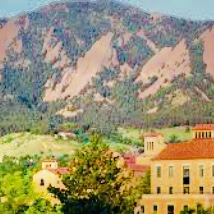
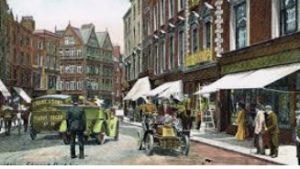
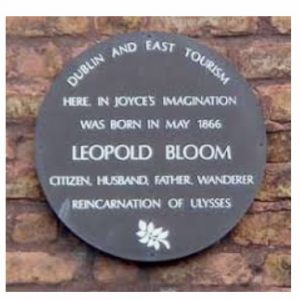

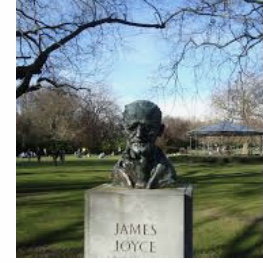
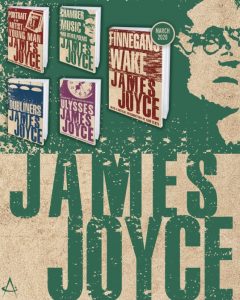
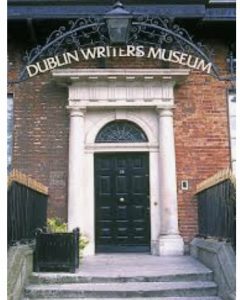
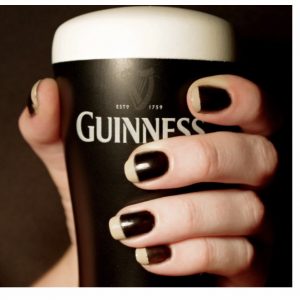

Great story about you and Joyce, Dana — even if, as you note, he does not appear to be one of the “bad boys.” I must admit that I’ve never been able to penetrate Joyce’s writing, let along become obsessed with him, so this was particularly helpful to me in trying to understand him and his following.
Will I now start reading Joyce? I can’t promise it. But thank you so much for this terrific story about both of you.
Thanx John!
Now that you’re retired with no excuse, I think you should try reading Joyce again.
Maybe first try the short stories in DUBLINERS, try the one called ARABY and the last story THE DEAD.
Or try the coming of age and autobiographic novel PORTRAIT OF THE ARTIST, and if I’ve hooked you, you’re ready for ULYSSES! I’ll read it with you episode by episode and we can discuss! Is that an offer you can refuse?
Interesting to learn about your passion for Joyce. Glad he wasn’t cancelled, except maybe by those who don’t understand his works.
Thanx Laurie!
I think the belief that Joyce is difficult to read is ill-founded. His interior dialogue and stream-of-consciousness style was innovative at the time, but now in our post-Freudian, let-it-all-hang-out era he is surely easier to access and understand.
So I say try him, but skip FINNEGANS WAKE!
What great experiences you have had, delving into all things Joycean, for a real fan. I have to admit that I have never read anything by James Joyce, or visited Ireland, but after your descriptions here, I think maybe now I should try them both.
Yes I hope you do Khati, I know you’ve been around the world, time for the Emerald Isle!
I liked the pictures you included with your story. But I have to admit, I have read “Portrait…” three times and I still don’t know what Joyce was trying to say. But I’m the kind of person who freezes when someone asks me to explain the symbolism in something I have read. I once remarked to a friend, a serious scholar of Melville, that I though “Moby Dick” was a great story about whaling. She just rolled her eyes and shook her head in response.
I think you should be allowed to enjoy Moby Dick for the adventure story and the characters Jeff, without breaking your head over what the whale symbolizes – in fact maybe he’s just a big old whale!
But I don’t think of Joyce as a symbolist writer, it’s his interior monologue style that confounds some readers, very innovative when he wrote a century ago. So I suggest you reread PORTRAIT simply as the coming of age story of Stephen Dedalus (a stand-in for Joyce himself surely) as he struggles with his Catholic upbringing, rejects the Church, and embraces his calling as a writer. If that works, read ULYSSES, as you may know Stephen is one of the protagonists therein!
Your love for Joyce comes through loud and clear, Dana. He might have a bad rep, but you’ve shined it up quite a bit here. And those summer semesters sound glorious.
Thanx Betsy, Joyce’s bad rep as hard-to-read writer I believe is so unfair!
Anyway getting thru hard stuff can be doubly rewarding!
Dana, in your first paragraph you list numerous artists who were problematic for different reasons. And even though you start the second paragraph saying “On the other hand, as far as I know, there was nothing reprehensible about author James Joyce,” I read the whole story expecting a revelation about something sordid you discovered. There wasn’t, so obviously you did not need to separate the art from the artist.
This was a fascinating peek into your obsession with Joyce.
Thanx Suzy, I didn’t mean to imply a cliff-hanger, as indeed there was nothing reprehensible about Joyce. As I say, in his case his life was so intriguing I guess I flipped the prompt wanting to keep the life of an artist I admired deliberately inseparable from his art.
In fact Joyce’s personal life invokes one’s sympathy, never one’s distain – his serious and painful life-long eye problems and unsuccessful surgeries, his financial problems, his daughter’s mental illness among other trials endured. And then the reward – his genius!
You have something enlightening to say about artists being prejudged for their work rather than their life, Dana. It’s been years since I read Portrait of the Artist, but you’ve inspired me to revisit that at least. I’m not quite ready to tackle Ulysses.
Brava Marian and thanx, , let me know when you do, would be fun to discuss it!
Well, now I have to try. Your enthusiasm is contagious, Dee, but I’ll start small.
Good Bebe, read a James Joyce short story or two from his collection DUBLINERS, perhaps ARABY or EVELINE, and let me know if you agree he’s a wonderful writer!
What a deep and exciting journey you’ve taken in pursuit of your literary obsession. What better way to escape life than to dive into the intricacies of a complex and pivotal writer from a faraway land. This is a lovely essay, Dana, and stands as such. It might be fun to give it a moment to breathe, revisit, and send it out to a lit journal. There are plenty of those, as you know. I loved your description of your love affair with Joyce. Lit Hub is fun to visit. https://lithub.com/category/lit-hub-daily/
Thanx Charlie, and will gladly follow your Lit Hub advice and submit it.
I did send the piece to Fritz, the scholar who taught that Ulysses class and who heads the James Joyce center in Zurich, and he did love it – and of course to all my fellow Joyce-lovers who’ve remained friends since those inspired Dublin days!
Still loved this great story, Dana. But now I am particularly ashamed to admit that, a year and a half further into my retirement, I still haven’t taken a chance on Joyce. Would you beliee how busy I’ve been? Seriously, with your very helpful response now freshly back in my mind, I promise to try to crack the shorrt stories in “The Dubliners.” Just check back with me in anoother yrear and a half. Or so.
Will do John if in a year and a half one of us remembers!
Dana,
I love this memoir on the influence James Joyce had on your life to the point of inspiring you to travel to his Ireland so you could soak up the vibes in a more personal way. I think my interest in Germany began when I started reading Le Carre’s “The Spy Who Came in from the Cold” and “A Funeral in Berlin.” But it would be the United States Information Service (USIA in America) who paid for my many trips there later over a 20-year span. I also think your opening discussion of trying to separate authors’ personal flaws from their artistic work is interesting. I sometimes find myself engaged in the same effort.
Thanx Jim.
I’m glad that reading led to your desire to travel abroad, and thanks to the USIA you had the opportunity!
The nicest and truest comment I can make about your story, Dana, is that it seemed to have some of the froth and rhythm of a good Joyce short story. And I ought to know: Just a few weeks ago, I completed a lifelong learning class in which we read all the stories in THE DUBLINERS. (But we were led by friendly high school English teacher, not an international translator or Joycean scholar.).
What a great example of following your passion, and allowing your life to be transformed by it!
Thanx Dale, and so glad you took that Dubliners class.
Aren’t the stories literary gems!
I gave Joyce a try decades ago and was unable to warm to him. Maybe now I should give him another shot.
It’s great to find a writer who becomes a lifelong inspiration. Mine was and is Ray Bradbury, the poet laureate of science fiction.
Do try Joyce again Dave!
And altho I’m not a sci-fi fan I read Ray Bradbury’s sweet, obviously autobiographical novel Dandelion Wine about a young boy’s country childhood.